 |
| Albert Nieboer/DPA Picture Alliance/Alamy |
The Kinsky Honeysuckle Tiara
 |
| DPA Picture Alliance/Alamy |
The principality of Liechtenstein may be one of the tiniest countries in the world, but its princely family still has a couple of pretty impressive tiaras in the vaults. Today, let’s have a look at their second major diadem, the Kinsky Honeysuckle Tiara.
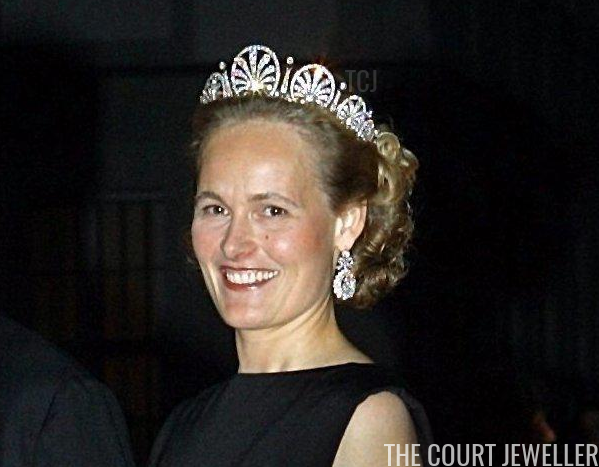 |
| DPA Picture Alliance/Alamy |
The sparkler, made of honeysuckle motifs in diamonds, silver, and gold, dates to the nineteenth century. The honeysuckle designs are surrounded by a halo of diamonds, and each element is interspersed by a vertical element with a floralesque design.
 |
| Princess Mathilde Kinsky of Wchinitz and Tettau |
The tiara started as a part of the Kinsky family collection, but its first wearer was a Princess of Liechtenstein. The sparkler was apparently a wedding gift to Princess Marie Josepha of Liechtenstein from her new husband, Prince Ferdinand Bonaventura, the 7th Prince Kinsky of Wchinitz and Tettau, in 1870. The maker of the piece does not seem to be known.
Precisely how the current members of the Liechtenstein princely family got their hands on this sparkler hasn’t been made entirely clear. However, the family does have further Kinsky connections. The current Princess of Liechtenstein was born Countess Marie Aglaë Kinsky of Wchinitz and Tettau, and some suspect that her husband, Prince Hans-Adam II, bought the Kinsky tiara for his wife at some point in the 1980s or 1990s. She made her first public appearance in the tiara in 1993, when she wore it for a ball the night before the wedding of her son, Hereditary Prince Alois, and Duchess Sophie in Bavaria.
 |
| Sophie wears the tiara for a ball the night before the wedding of her sister, Duchess Elisabeth in Bavaria, September 2004 (DPA Picture Alliance/Alamy) |
Since the tiara came into the family’s collection, the Liechtenstein ladies have made good use of it. It has served as a bridal tiara for two of them: Princess Tatjana, the only daughter of Hans-Adam and Marie Aglaë, and Angela Brown, the wife of Prince Maximilian. The tiara has also been worn by Marie Aglaë and the current hereditary princess, Sophie. As Sophie’s husband has been the regent of Liechtenstein for nearly a decade, she’s the one who appears in tiaras most frequently these days — though she generally chooses the family’s grand fringe tiara. Here’s hoping that she’ll break her fringe-only routine and give this sparkler another outing soon!
The Habsburg Fringe Tiara
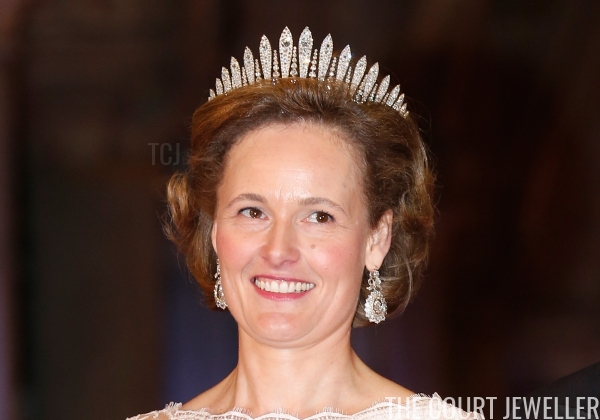 |
| Hereditary Princess Sophie of Liechtenstein wears the Habsburg Fringe Tiara (Michel Porro/Getty Images) |
With a name like “the Habsburg Fringe Tiara,” you’d be forgiven for thinking that this tiara was a part of the collection of the former imperial family of Austria. But this particular fringe now belongs to another group of royals: the princely family of Liechtenstein. Let’s have a look at their intriguing imperial tiara, shall we?
 |
| Michel Porro/Getty Images |
As with many diadems created for the women of the Habsburg family, this tiara was made in Vienna by Köchert, the imperial court jeweler. The fringe was made around 1890, during the reign of Emperor Franz Josef I. The tiara was made in a very popular contemporary style, mimicking the diamond fringe tiaras worn at the court of the Romanovs in Russia. The halo-shape of these fringe tiaras is meant to echo the kokoshnik headdresses worn by Russian women. Luxarazzi, which covers the Liechtenstein princely family as well as the royals of Luxembourg, notes that the tiara is made of “diamonds set in silver and gold.” Like most fringe tiaras, this one can reportedly be converted to a necklace.
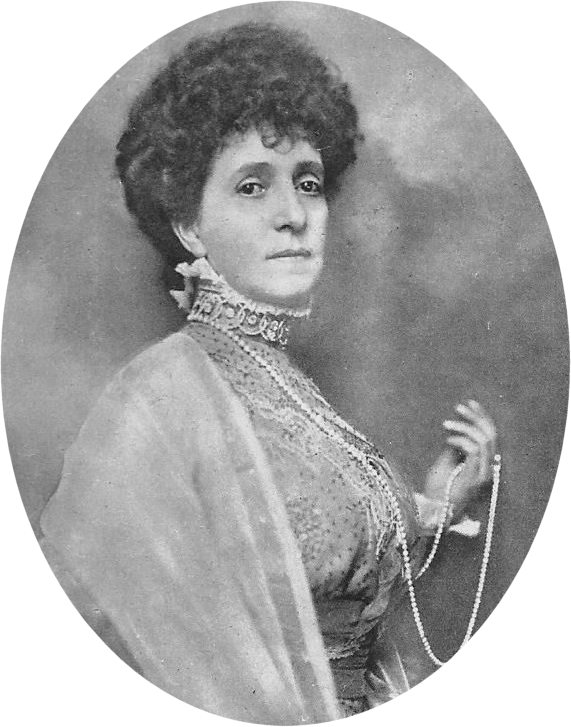 |
| Archduchess Maria Theresa (Grand Ladies Site) |
The tiara’s construction date is potentially significant. A year before it was made, Franz Josef’s only son, Crown Prince Rudolf, died in a tragic double suicide. Rudolf’s death meant that the new heir to the throne was Franz Josef’s younger brother, Archduke Karl Ludwig. The tiara was made for Karl Ludwig’s wife, Archduchess Maria Theresa.
 |
| At the wedding of Emperor Karl I and Empress Zita of Austria-Hungary in 1911, the Duchess of Parma (left) wears the Bourbon-Parma Tiara, while Archduchess Maria Theresa (right) wears the Habsburg Fringe Tiara; the two women were sisters, both daughters of Miguel I of Portugal (Grand Ladies Site) |
Archduchess Maria Theresa, who was a daughter of the controversial King Miguel I of Portugal, was Archduke Karl Ludwig’s third wife. She was a relatively minor figure at the Habsburg court until Crown Prince Rudolf’s death vaulted her husband into the position of heir presumptive. The wife of the new heir to an imperial throne would have needed brilliant jewels, and this tiara would certainly fit that description. Moreover, Rudolf’s mother, Empress Elisabeth, withdrew from most public events after her son’s death, so Maria Theresa effectively became the senior royal lady at the imperial court, apparently with this fringe tiara as a part of her jewelry collection.
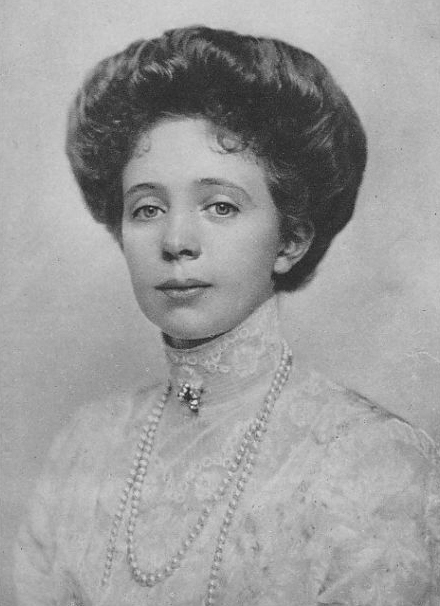 |
| Archduchess Elisabeth Amalie, who married Prince Alois of Liechtenstein, inherited the tiara from her mother in 1944 (Wikimedia Commons) |
In the end, Karl Ludwig and Maria Theresa did not become emperor and empress. In 1896, Karl Ludwig died, and his son, Archduke Franz Ferdinand, became the new heir. Although Maria Theresa had to basically retire from many public functions after she was widowed, she remained hugely influential privately. She helped engineer the controversial marriage between Franz Ferdinand and Sophie Chotek, and she also worked to ensure that the 1903 wedding of her daughter, Archduchess Elisabeth Amalie, to Prince Alois of Liechtenstein was viewed as an equal, dynastic match.
 |
| Princess Gina wears the tiara on a stamp issued in December 1960 (Wikimedia Commons) |
Elisabeth Amalie’s wedding made her a Princess of Liechtenstein; when she inherited her mother’s tiara in 1944, it made the fringe a part of the Liechtenstein jewel collection, too. Elisabeth Amalie’s son, who was named Franz Josef after the Austrian emperor, inherited Liechtenstein’s princely throne in 1938. Prince Franz Josef II’s wife, Princess Gina, was photographed numerous times in the fringe tiara. Gina was also depicted wearing the tiara on stamps, including one issued in 1960…
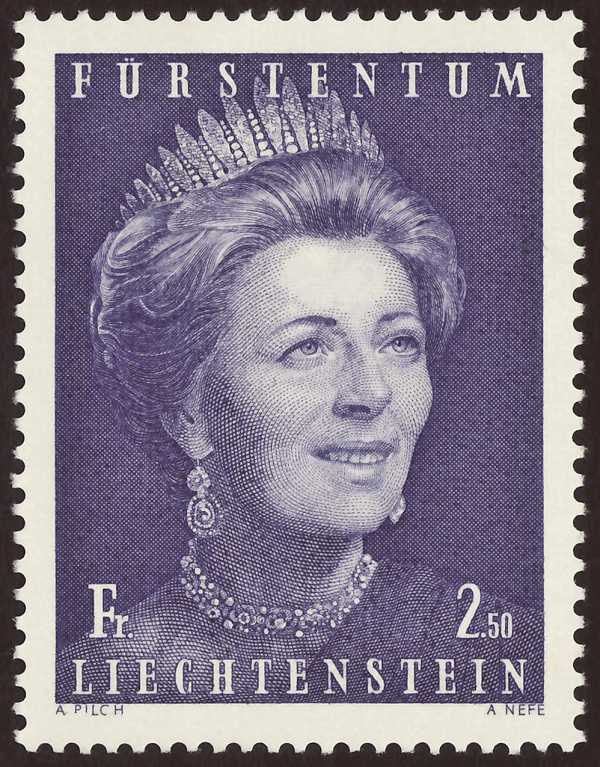 |
| Princess Gina wears the tiara on a stamp issued in June 1971 (Wikimedia Commons) |
…and one issued in 1971. Both illustrations provide a lovely look at the details of the tiara’s fringes and spikes, rendered in a bold graphic format.
The tiara has also been worn by more than one bride in the family. Countess Marie Aglaë of Wchinitz and Tettau wore it to marry Franz Josef and Gina’s eldest son, Prince Hans-Adam, in 1967. Four years later, the fringe tiara was worn by Isabelle de L’Arbre de Malander at her wedding to Franz Josef and Gina’s second son, Prince Philipp.
 |
| Hereditary Princess Sophie wears the tiara at the pre-inauguration dinner in the Netherlands, 2013 (ROBIN UTRECHT/AFP/Getty Images) |
Today, the tiara is primarily worn by Hereditary Princess Sophie, the wife of Hans-Adam and Marie Aglaë’s eldest son, Hereditary Prince Alois. I’d classify the fringe as the grandest tiara from the family’s collection, so it’s not surprising that Sophie often brings it out for major royal events.
 |
| Hereditary Princess Sophie wears the tiara at the birthday gala for Crown Prince Frederik of Denmark, 2018 (screencapture) |
In 2010, for example, she wore the tiara at the wedding of Crown Princess Victoria of Sweden. She also donned the diadem for the gala held the night before the investiture of King Willem-Alexander of the Netherlands in 2013 and the 50th birthday gala for Crown Prince Frederik of Denmark in 2018.
- « Previous Page
- 1
- …
- 5
- 6
- 7
- 8
- 9
- …
- 19
- Next Page »